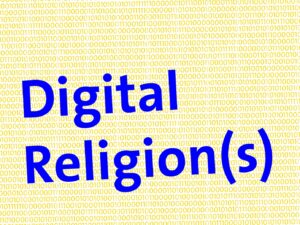Thursday, 28 October 2021
Today is the fourth day of the artwork week for young refugees organised by the association NELA. As part of one of the UFSP Digital Religion(s) projects on the relations between local, transnational, and virtual communities of young people with migration background, I chose this field as one of the first of my research.
For one week’s time, young migrants and refugees come here to produce artwork, guided and supported by the artist François Burland, who was also head of the association NELA. The theme of this week is „Portrait“: The refugees – and also me, the participant-observer – will try to create a portrait of another participant, using the techniques of gravure and printing.
On the first day, almost nobody knew each other yet. I was new, the young artists-to-be were new and I could feel that everyone was a bit nervous about how to approach each other. But the more the days go by, the stronger the mutual support and the more the group cohesion becomes. Since day 1 in the afternoon, it is rare for someone to work alone on their artwork. This gives rise to passionate discussions and exchanges on the traditions and culture of each person, such as explanations on the cross of an Ethiopian woman’s necklace, or a debate on what is „true Islam“ between a Somali and an Afghan. The jokes fly and the room is noisy, often echoing with the laughter of all these young people. Sometimes one of the participants puts music from his.her country on YouTube and some listen attentively, while others start dancing. Many of them also exchange tips on how to live in Switzerland or share phone numbers, or Instagram and Snapchat accounts.
These young people have for most of them migrated alone, often while still minors. They, therefore, have many things in common, yet they all have very different profiles. In the following, four young men and women present the portraits they created in the art studio. The pictures will be accompanied with some glances at their personalities and histories that I wrote down as fieldnotes shortly after meeting them.
For the personal protection of these people, no name or face is shared online.

This first portrait was done by a 25-year-old woman from Eritrea. She arrived in Switzerland alone. Quite lonely, she manages on her own and does not ask for anything from anyone. She has a sort of motherly or mentoring role at times, as she has been in Switzerland for several years and gives a lot of advice to others. She is very little on social networks and remains very discreet in general.

This second portrait was done by a young Somali, who is 25 years old. He too came to Switzerland alone, after many obstacles on his way. It was when he arrived in Switzerland that he acquired his first smartphone. He found comfort fairly quickly through a network of Somalis in Switzerland. He goes to the mosque almost every day and also follows imams online, on YouTube, or on social networks. Today, he has no contact with Somalia, despite his smartphone, as none of his relatives have access to the internet or a smartphone there.

The Iranian who made this is 35 years old. He left Iran because he was openly critical of the government and Islam on his Instagram and Twitter accounts. Today, he continues to be an „influencer“, as he puts it, from Switzerland. He is known to a certain community of Iranians who are also opposed to the Islamic Republic of Iran. His community is clearly a virtual community: Iranians living all over the world follow and support him online.

This last portrait is done by a 16-year-old Afghan girl. She was born as a refugee in Pakistan. At the age of 15, she left Pakistan with her two sisters to come to Europe. She managed to come to Switzerland, but her sisters are stuck in Greece. Today, she lives in a shelter for unaccompanied minor migrants. She posts many selfies or photos with Snapchat filters online. She is very lonely, knows few people, but she keeps a constant enthusiasm and is always laughing.
Notes and thoughts: what is the link between this art workshop and my project?
As one of the twelve sub-projects of the UFSP Digital Religion(s), the P5 project Digital Relationships and Local Religious Communities analyses the relations between local, transnational, and virtual communities of young people with a migration background. The project, initiated by Dorothea Lüddeckens and Rafael Walthert and jointly carried out by Mira Menzfeld and me, Virginie Fazel, is based on a qualitative and field research approach. This focus with plenty of time for establishing trustful connections with interlocutors allowed me to meet young refugees, to understand their backgrounds, hopes, and fears, and to conduct in-depth interviews with them. They are all young refugees, most of them coming alone to Switzerland. Questions that come to me as a researcher, but also as a private person, are: What happens to them? Will they maintain a transnational community thanks to digital tools and new technologies? Will they seek a new virtual community? Or will they prefer to focus on a (religious or not) community in Switzerland? The observation of the relationships between these people and their interactions are significant. It allowed a first look at the roles of digital, religion, and community for them, as well as local and transnational exchanges.






